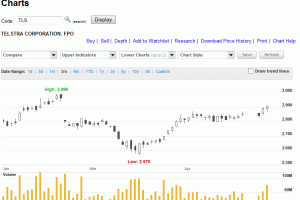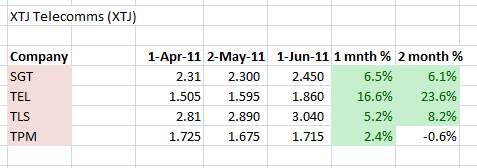I’ve already revealed my rules for long term investing, so it’s time that I also added my rules for short term investing in the Australian stock market as well to make it fair.
I have always said that short term investing is much more fun than long term, but it takes a lot more commitment since you need to be on top of the market at all times. Plus you need to learn a bit about technical analysis, interpreting charts and setting up your stop losses early.
But if you are ready to have a go, here are my rules for short term investing:
Rule 1: Find a sector that is already outperforming the rest of the market
Rule 2: Find the top stocks within that sector
Rule 3: Check if they are currently in an uptrend or not
Rule 4: Choose the most consistent stock
Rule 5: Set up your sell rules as soon as you buy
So let’s look at each one in a bit more detail:
Rule 1: Find a sector that is outperforming the market
It’s pretty easy to find a list of the top Australian market indices as they are listed on the ASX website, your online broker site, even newspaper sites like smh.com.au list them as well. They include Consumer Discretionary, Consumer Staples, Energy, Financials, Financial x Prop Trusts, Gold, Health, Industrials, Information Technology, Materials, Metals & Mining, Property Trusts, Telecommunications, and Utilities.
Then it’s just a matter of seeing which of these sectors are doing better than the All Ords by comparing how much each of them have increased (hopefully anyway) within the past month. If any have increased higher than the All Ords then that sector is obviously doing well.
Rule 2: Find the top stocks within that sector
Next you need to check out the sector (or sectors if there are a few that you want to check out) for the best stocks within that index. Again, it’s a matter of making a list of how much each stock has increased over the last month and choosing the ones that have increased the most.
Rule 3: Check they are currently in an uptrend
Once you have your list of 5 or 6 companies that you are interested in investing in, then have a look at their charts to see if they are in an uptrend or not. Even though some shares are increasing in price does not always mean that they are in an uptrend so it’s worth having a look at a chart to see what it’s doing.
Rule 4: Choose the most consistent stock
I like to look at the increase in prices over the last two months to see if the companies are increasing by roughly the same amount each month. So if it increased by 4.5% in month 1 and then 4.7% in month 2 then it would give me more confidence in investing in it. If however it increased by 3.5% in month 1 and then 8.9% in month 2 then I would be more wary as it could mean that it’s just as likely to jump back down the following month.
Rule 4: Set your sell rules.
If you are investing for the short term then it’s important to set your sell rules immediately after you purchase your shares. Your first sell should be your stop loss that you will sell out if your share drops by a certain amount (usually 10%) so that you don’t lose any more money than you have to. The second is your profit sell price, the price that you want to take your profit at. So if you think it will increase by 8.1% over the next two months, you could set it at that, or you could re-evaluate once it got to that price to see if you wanted to continue to hold or not.
Setting your sell price early is important for keeping in the game.
So they are my rules for short term investing. I’ll show you an example in my next post.
Tracey




1 Comment
he Tracy good read just found it today am single guy with sum extra cash i want to play with sick of loosing on horses this way i can pull out befor my horse looses anyways can u give me any more advice on short term stocks or send me in the right direction if not thats ok thanks for your time gerald